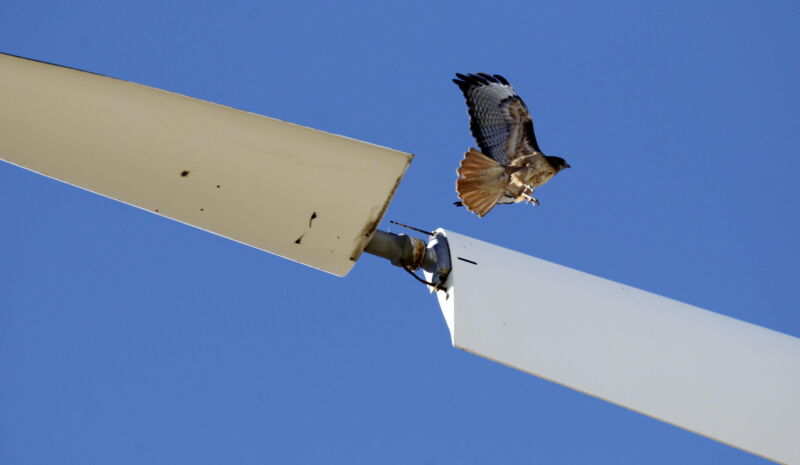Wanted (by scientists): Dead birds and bats, felled by renewables

Enlarge / A Red-Tailed Hawk takes off from an idle turbine blade in 2013. (credit: San Francisco Chronicle/Hearst Newspapers via Getty Images)
"This is one of the least smelly carcasses," said Todd Katzner, peering over his lab manager's shoulder as she sliced a bit of flesh from a dead pigeon lying on a steel lab table. The specimens that arrive at this facility in Boise, Idaho, are often long dead, and the bodies smell, he said, like nothing that you can easily describe, other than yuck."
A wildlife biologist with the US Geological Survey, a government agency dedicated to environmental science, Katzner watched as his lab manager rooted around for the pigeon's liver and then placed a glossy maroon piece of it in a small plastic bag labeled with a biohazard symbol. The pigeon is a demonstration specimen, but samples, including flesh and liver, are ordinarily frozen, catalogued, and stored in freezers. The feathers get tucked in paper envelopes and organized in filing boxes; the rest of the carcass is discarded. When needed for research, the stored samples can be processed and sent to other labs that test for toxicants or conduct genetic analysis.
Most of the bird carcasses that arrive at the Boise lab have been shipped from renewable energy facilities, where hundreds of thousands of winged creatures die each year in collisions with turbine blades and other equipment. Clean energy projects are essential for confronting climate change, said Mark Davis, a conservation biologist at the University of Illinois at Urbana-Champaign. But he also emphasized the importance of mitigating their effects on wildlife. I'm supportive of renewable energy developments. I'm also supportive of doing our best to conserve biodiversity," Davis said. And I think the two things can very much coexist."